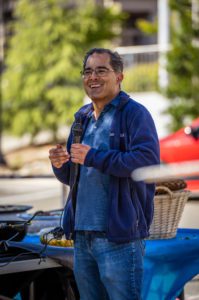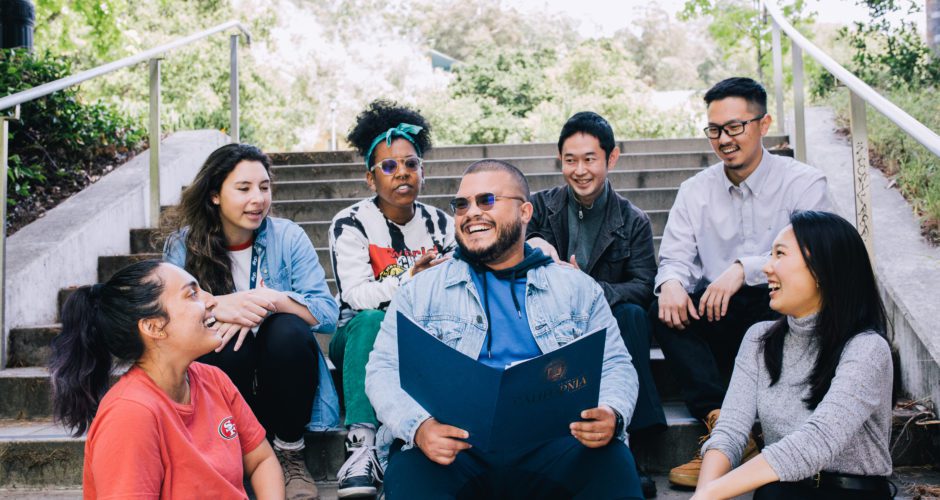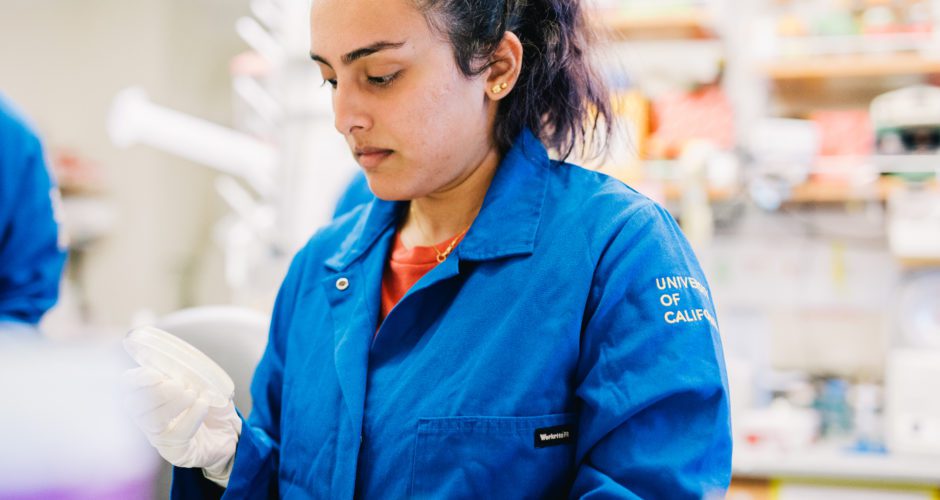David Schaffer is a professor of Chemical and Biomolecular Engineering, Bioengineering, and Neuroscience. Schaffer’s applies engineering principles to enhance stem cell and gene therapy approaches for neuroregeneration. This work includes mechanistic investigation of stem cell control, as well as molecular evolution and engineering of viral gene delivery vehicles. In addition to his lab’s research, Schaffer has cofounded eight companies and serves as the director of the Bakar BioEnginuity Hub and Bakar Labs. On July 1, 2022, he became the executive director of QB3.
QB3-Berkeley: Earlier this year, you became the director of the Bakar BioEnginuity Hub (BBH). Can you tell us more about this new part of UC Berkeley’s ecosystem?

David Schaffer: UC Berkeley has the ability to create incredibly innovative discoveries and inventions. And having a conduit—and a physical space on the edge of campus—that can translate those inventions into companies that create products designed to solve societal problems is the goal of BBH and Baker Labs.
QB3: In addition to running the Schaffer lab and being a leader in various roles on campus, you’ve cofounded eight companies. What advice would you give to students who are interested in being scientists and entrepreneurs?
DS: The advice I would offer to students is to do really good science. In my own lab, we always try to start by identifying a big problem. When I started my academic lab, I didn’t know that I was going to be forming companies; I was simply interested in identifying societally impactful problems. In my case, this was in the field of healthcare because that’s the focus of my scientific research. Once my lab began developing solutions to problems, that naturally led to the question: How do I turn these solutions into healthcare therapies that can potentially solve unmet medical needs?
As a trainee, once you’ve discovered a potential technological solution to an important healthcare problem, you may be able to play a role in the next step, which is forming the company that then translates that technology into clinical development. The advice, in short: identify a really important problem and do terrific science.
QB3: Can you tell us about any of your lab’s current research projects?
DS: Sure. I’ve been working with stem cells for 25 years; initially, when I was a postdoc, and then in my lab over the past couple of decades at Berkeley. My lab has been using human pluripotent stem cells and employing a technique called optogenetics to study how patterns of signaling within a cluster of cells emulates the early stages of embryonic development. And that can also give us insights into how that process can go awry and lead to problems with human development. This is an area we’ve been really excited about recently: gaining basic insights into organic genesis and early-stage human developmental biology.
On the translational side with stem cells, once we have insights into how to direct the development of a stem cell into a particular cell type, we’re really interested in studying how to develop controlled robust environments that can always instruct that cell to turn into that particular cell type. For example, we can use these approaches to generate large quantities of dopaminergic neurons to treat Parkinson’s disease or cardiomyocytes to treat heart failure, or beta cells to treat type-one diabetes. Being able to scale up the differentiation of stem cells into a therapeutically relevant cell type is something that harnesses the lab’s experience working at the interface of chemical engineering and biology.
QB3: What do you enjoy about working with trainees?
DS: One aspect of what I enjoy about being at Berkeley is the opportunity to work with really, really smart people. We have smart staff, smart professors, and smart trainees. I enjoy teaching and working one-on-one with graduate students, which is an individual version of what I do in the classroom, when I’m teaching large numbers of undergraduates. I love seeing people develop into smart, independent scientists.
QB3: What brought you to the Bay Area?
I’m here because Berkeley is good at everything. As a trainee, I was interested in a place that had terrific physical and mathematical sciences and engineering, as well as basic biological science programs. In addition, I was interested in place that didn’t necessarily have a medical school on campus but was in an ecosystem that did. I also wanted to be in an area that supported academic hospitals, biotech, and pharmaceutical companies. Having access to the Berkeley and Bay Area research and biotech ecosystem has helped our research.
QB3: What do you like to do when you’re not when you’re not in the lab?
DS: I’ve loved hiking since I was a little kid. My wife and I hike together on the weekends. In addition, I absolutely love rock climbing. It’s one of these nerdy sports that involves being athletic, but it’s also all about physics; it’s about momentum and center of gravity. Rock climbing is not only about endurance, or how strong you are, but about how you can reason through all the positions your body has to travel through to get from the bottom of a climb to the top.
QB3: This month, you began serving as QB3’s executive director. What drew you to leading this multi-campus institute?
DS: I’ve had a tremendous amount of respect for QB3 since its founding in 2000. I believe in the missions of QB3: fostering scientific and technological innovation and supporting entrepreneurship. The three QB3 campuses—at UC Berkeley, UC San Francisco, and UC Santa Cruz—support the institute’s scientific innovation and research activities. The central office provides resources and leadership that sparks collaboration between the three campuses, as well as helps act as a conduit for translating public research into the private sector to extend the impact of the university toward societal good.
QB3: What are you excited about in QB3’s future?
DS: QB3’s central office has taken on the role of supporting the individual campuses in translation. That mission started out at UCSF with the formation of Mission Bay Capital and MBC BioLabs. Then, QB3 pivoted across the Bay to Berkeley to help build and launch the Bakar Labs. UC Santa Cruz is now organizing a Silicon Valley campus where they’re interested in exploring entrepreneurship as it relates to computational biology in digital health. I look forward to fostering collaboration between the three QB3 campuses and potentially including the other northern California campuses like Merced and Davis in these kinds of joint projects. As I mentioned earlier, the focus of my own research has moved toward translational science that creates products and technologies seeking to improve patient outcomes. As QB3’s executive director, I hope I can help support other scientists in their efforts to discover and translate.


